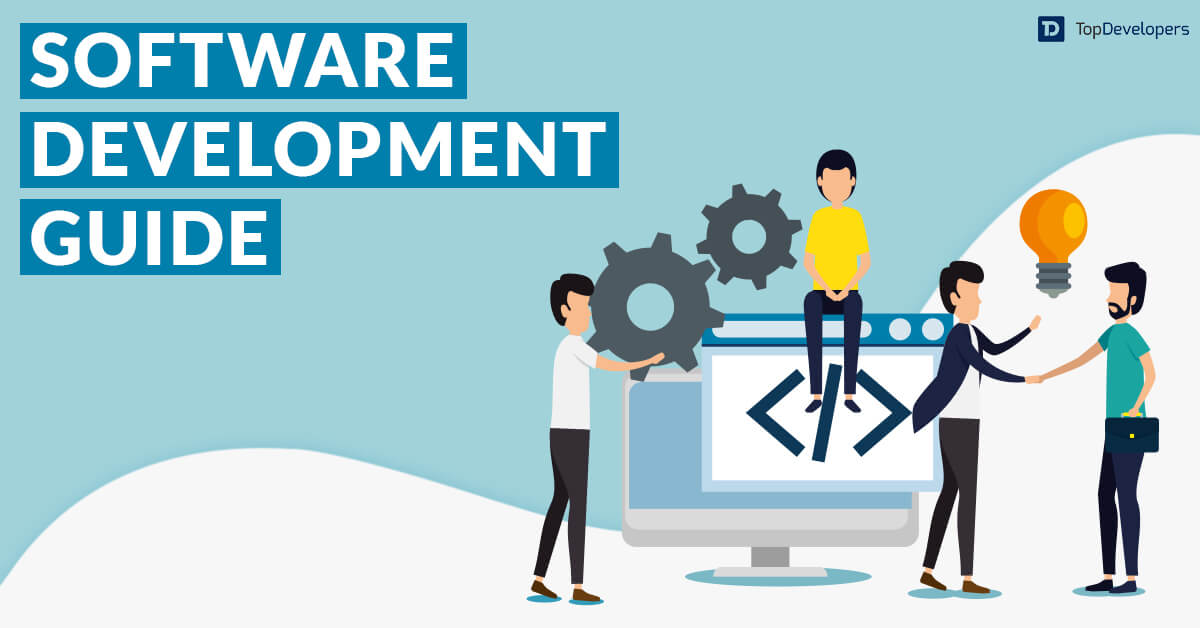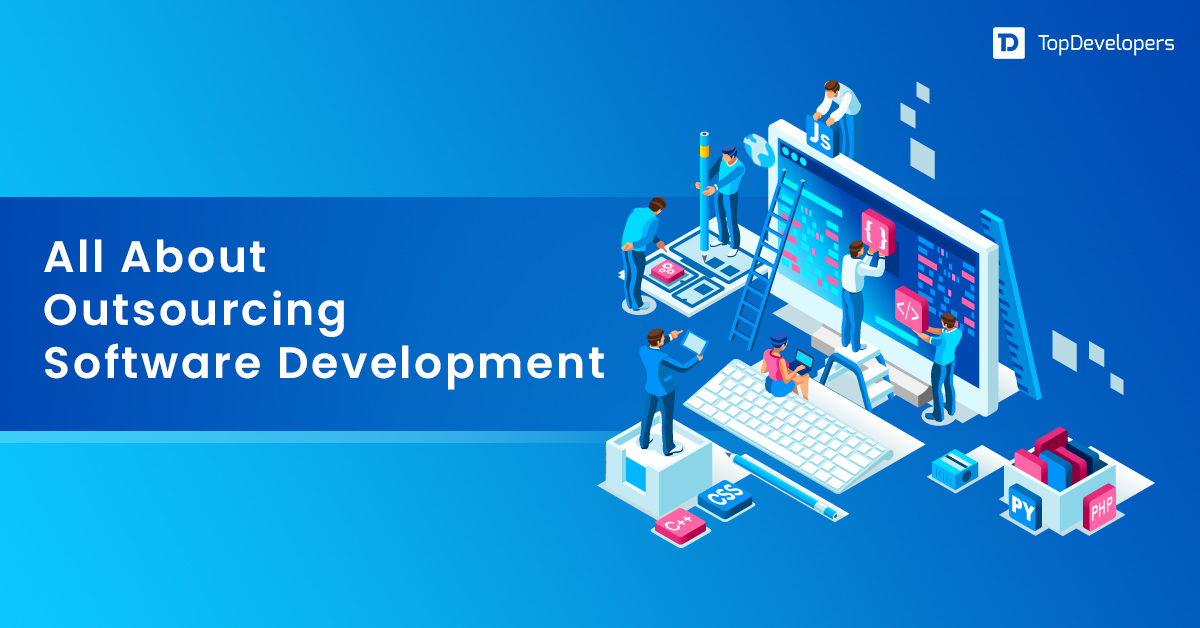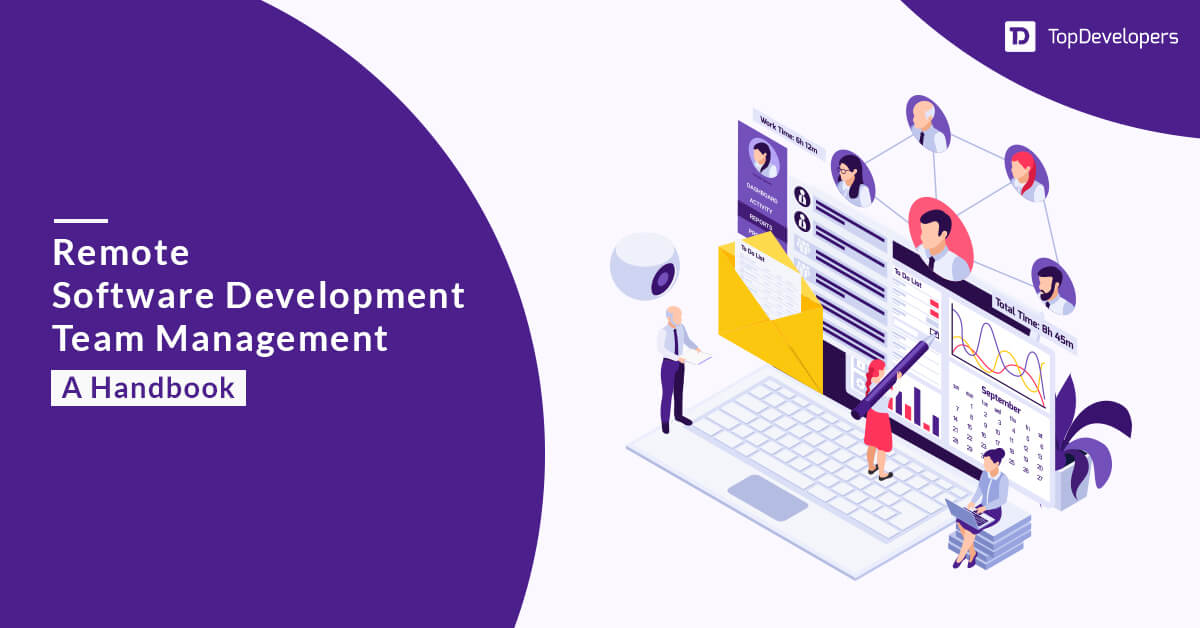
Custom software development is a need of the hour, and it is projected to grow at a CAGR of 22.5% from 2024 to 2030. The rising need for flexible workspace, personalized experience delivery, and agility are contributing to this growth. The increased demand for tailor-made software has proportionately intensified the demand for software developers and, thus, the development cost.
Most entrepreneurs look forward to the average custom software development costs before they plan anything related to software products so that the budget is well-managed. The cost of building custom software depends on several factors, and a couple of tips would help minimize the development cost.
This blog will walk you through a brief overview of the average cost of software development, factors impacting the cost, steps to calculate software development cost accurately, and tips to reduce the development cost. Let’s browse!
Table of Contents
- What Is the Average Cost of Software Development?
- What Are the Major Factors Affecting Software Development Cost?
- What are the Hidden Cost of Custom Software Development?
- Steps to Accurately Estimate Software Development Costs
- Various Cost-Estimating Methods Used for Custom Software Development
- Top Ways to Reduce Software Development Costs
- Key Tips to Accurately Estimating Custom Software Development Costs
- Calculating!
- FAQ:
What Is the Average Cost of Software Development?
The average cost to develop custom software can start from $100,000 to $400,000, depending on features and functionalities. SaaS-based software product development costs from $50,000 to $200,000. There is no universal fixed price when the concern is about building custom software, as various factors affect the development process. Many factors help to break down the overall cost estimation of custom software development.
Let’s understand them in detail.
Software Development Cost Estimation by Size of the Company
The size of the business or company matters because a smaller company would require simple software, whereas an MNC would have more data and complex operations. Therefore, multi-tier software solutions would be necessary.
Here are the general types and their impact on the software development cost.
- For Startups: Startups cannot spend too much budget on the development of custom software and may opt for cost-effective solutions. Custom software development for startups often costs between $10,000 and $100,000, depending on project complexity and the business requirements of the brand.
- For Small & Medium-Sized Businesses (SMBs): SMBs often devote greater resources to develop a software for their business and services. The cost to develop Custom software for SMEs can range from $50,000 to $500,000 or more, depending on the scope and complexity of the project. They mostly target simple solutions as they need to offer a seamless experience to their users.
- For Enterprises: Custom software development costs for large business organizations and corporations can be quite high compared to those of SMBs and startups. One of the prominent reasons for higher costs is there is a lot of data integration and error handling, which can raise the price of software development. Large corporate software projects with complex needs and broad functionalities may incur much higher development expenses. Enterprise software initiatives cost anything from $100,000 to several million dollars.
Software Development Cost Estimation by Type
A lot depends on the type of software solutions or tools that you want to build for your business. For instance, a website would cost you a bit less as compared to a full-fledged mobile app solution. Hence, the costs depend on which type of software you are seeking. Broadly, on the market, you have three types of software solutions for custom development to choose from.
- Web Applications: The cost of developing a custom web application ranges from $10,000 to $500,000 or more, depending on the features and complexity. Cross-platform software development can increase the development cost.
- Mobile Apps: The cost of developing a custom mobile app ranges from $20,000 to $250,000, depending on the platform (iOS, Android, or both), features, and design complexity. Building a hybrid application can be quite expensive compared to a native application.
- Desktop Applications: The cost of developing custom desktop software starts from as low as $10,000 to as high as $250,000, depending on the requirements and complexity.
Here are the overall (rough) costs of some of the major enterprise-level software solutions:
- A CMS software solution could cost you somewhere between $5,000 to $50,000
- A SaaS could cost you somewhere between $5,0000 to $300,000
- An overall mobile app development cost could go between the range of $10,000 to $200,000
- A healthcare solution could cost you $10,000 to $500,000
Software Development Cost by Location
The geographical location of the Software development partner impacts the cost of building custom software due to variances in rates of hiring resources. The cost of the software depends on where you are building or from which country a custom software development firm you are hiring.
The following are some known software development cost breakdowns by location:
- North America and Western Europe: Development costs in these regions are often higher. You can get software development companies from the USA or the UK onboard but with hourly prices ranging from $100 to $250 or more.
- Eastern Europe, Latin America, and Asia often have lower development expenses, with hourly prices ranging from $30 to $100.
What Are the Major Factors Affecting Software Development Cost?
It is only possible to estimate the total cost of software development by understanding the factors that can impact the overall cost. Understanding the average price can make it easy for you to determine the budget for creating custom software.
Here are some of the popular critical factors that impact the cost of custom software development.
Target Platforms
Selecting the right platform to build the software is the first and foremost factor to consider, as it is essential to make the software based on the target audience’s platform preference. Selection of the platform must be based on assessing the customers. Therefore, most software development companies focus on the target audience to provide the best software solutions.
Software Size
The size of the custom software has a direct impact on the cost. In simple words, larger software projects demand greater investment. In addition, the goals and specific needs of the company can also influence the budget.
In most cases, software product development for startups requires basic software as they want to test its impact on the limited user base. At the same time, large brands want to hit the market hard and gain profits from the created software. The complexity of the project, the number of features, and the development methodology directly impact the cost.
Software Complexity
The cost of software development is heavily influenced by its complexity. Making software that can maintain user profiles and provide customized options, payment upgrades, search filters, and other options can increase the cost higher. Furthermore, Creating futuristic software can be quite expensive as it will demand dynamic user interfaces along with a wide range of features. The complexity of the database affects the overall cost as it accommodates compatibility needs and updates of the software solutions.
Technology Stack
The tech stack used for custom software development substantially impacts the project’s cost. Programming languages, frameworks, libraries, and tools all impact development time, necessary knowledge, expertise required, and resource availability – all of which ultimately affect the cost of making software.
The use of popular or proprietary technology may necessitate hiring specialized developers with relevant experience and expertise which raises expenses. However, certain technologies offer pre-built features, minimizing the need for custom development and potentially saving costs. Additionally, costs may be impacted by compatibility with existing systems, as integration with existing systems may be required which can affect the budget. It is critical to carefully analyze the technological stack in order to balance project requirements, financial constraints, and long-term scalability, which will ultimately influence the cost of bespoke software development.
Creative Design
Creative design is a part of the software development process. It includes selecting typefaces, color palettes, graphics, and even creating custom designs and animations to improve your software’s visual appeal. The recommended budgeting for design-related tasks should be around $10,000 to $20,000. This sum covers the design process, including feedback iterations and prospective redesigns. The project fee will rise correspondingly if you need more design time or elaborate custom artwork. Go for a minimalistic design with basic layouts and standard design elements that enable software development within your allotted budget.
Integration with Other Systems
When external software systems of solutions are integrated into the software development life cycle, uncertainty is introduced into the equation. The simplicity of information interchange and compatibility with different systems might vary greatly.
While some integrations are simple, others can be rather difficult. Integrations with payment gateways such as PayPal, Stripe, Razorpay, or Authorize.Net and credit check services such as Equifax or Experian are simple to incorporate within the software. Integration of such tools could come with some extra cost, depending upon their software development project pricing structure. Minimizing third-party integrations helps reduce software development costs by a large margin.
Migration of Existing Data
Manual data entry may not be possible if you have data in an existing system that needs to be transferred to your new software application. In such instances, migration is required.
The migration procedure is simple but includes numerous decisions and considerations because the two separate systems can store data differently. After the software is created migration operations are typically repeated several times to ensure accurate data transition and proper utilization in the new system.
Establishing translation rules, scripting, testing, and making revisions adds time and money to the project.
Designing to Budget
Like building a house, custom software development, driven by current software development trends, can be tailored to fit a specific budget. One must be within one’s budget when concerned about building a house or developing software. Atop, a custom software development company that is up-to-date on the newest trends, can take your ideas and create a design while keeping your budget in mind.
Specific elements can be added or removed after the first design and cost estimate are finished to match your preferred budget. Setting a fair goal budget at the start of a project is highly recommended to ensure optimum resource utilization.
Hiring Model
The hiring model directly impacts the cost of custom software development. It’s important to explore the different models and prices available in the market and choose the best-suited one:
- In-house Team Expansion: With this model, you hire software engineers from a custom software development agency to work directly from your office location. This approach offers the highest level of collaboration but comes with a higher price tag due to the costs associated with maintaining an in-house team.
- Outsourcing: The majority of the brands love to outsource their software product development to a software company in the top countries providing cost-effective outsourcing services. They handle the work on your behalf, which means you don’t have to take the stress of the development process and have less responsibility for infrastructure and the development team management. The cost of outsourcing varies depending on the scope of the project and the expertise of the chosen development service provider. Considering a full-service offshore software development agency helps your business get all the services under one roof at competitive rates.
- Freelance: Freelancing is the need of the hour for the majority of start-ups. One can hire some of the world’s finest from the best platforms to hire remote developers like Upwork and Fiverr. Brands that want to spend less on a software development agency tend to hire freelancers to cut the budget. There are also drawbacks to hiring freelancers, as service quality and reliability are always a concern.
- Local development team: Hiring a local development team is a good option, as many businesses prefer to avoid cultural differences and time zone differences. Also, partnering with a local software company to hire a team eliminates the need to pay national taxes that are associated with outsourcing options. The software team will have a great understanding of the niche market, and stellar communication ensures the team builds the solution within time and budget.
It’s essential to consider your specific requirements, budget, and desired control level when choosing a recruitment model. By doing so, you can make an informed decision that aligns with your needs and maximizes the value of your investment.
Business Requirements
Every business is unique in terms of its offerings, operations, and others. That’s why businesses want software to be built in a specific way. It requires businesses to outline business requirements in the software documentation, including customer pain points, business objectives to achieve with software, resources needed, project constraints, milestones, potential risks, and target audience’s requirements. The business requirements bring major changes in software development costs.
What are the Hidden Cost of Custom Software Development?
Apart from the direct costs associated with software development, hidden costs cannot be ignored. The hidden costs for software development include a lot of factors.
Maintenance and Support
Constant support and maintenance are essential for ensuring the smooth operation of the software. Bug patches, adjusting to new requirements or technologies, fixing security vulnerabilities, and providing technical support are all part of the job. These efforts necessitate resources, time, and even the involvement of third-party assistance providers.
Hosting Expenses
Hosting cost is a crucial part of the initial software development cost. When your software includes email, push notifications, analytics, integration, and others, all these functionalities are hosted over a server, be it a cloud server or SaaS. In both cases, businesses will pay a monthly fee, and this fee will increase after the software launch when businesses grow and scale. By planning for the budget while considering the ongoing hosting costs, you can feel prepared and in control of your software development journey.
Security Expenses
Secure software development is paramount to build credibility, reputation, and trust. Simultaneously, maintaining security and intensifying it with growing cyberattacks is equally important to keep customers’ data and business transactions secure. It demands the development team to keep the software up-to-date using the latest technology, continuously perform check-ups, and prevent fraudsters from injecting vulnerabilities proactively. So, businesses need to set aside a good amount for safeguarding software from hackers.
Technical Debt
When developers are forced to build the software quickly or fix the bugs rapidly, they deviate from the agreement and write the code imprecisely, which is referred to as technical debt. It requires other developers to fix the non-conforming task at the same time while working on another task, which results in more mistakes, and the code is difficult to maintain. Even scalability and high performance are implausible and pose significant hidden costs at a later stage.
Strategic Costs
When businesses identify new market opportunities, taking necessary actions quickly is important to stay caught up. The firms that take early bird advantage can address the market needs, attract users, and gain a competitive advantage. However, this requires strategic planning and specialists who can help you with planning and execution, which goes into the category of strategic cost. By planning for these hidden costs, you can feel reassured and confident in your long-term success.
Marketing Costs
Regardless of the quality or unique software you build, it’s of no use unless the target customer knows about the same. In addition to developing up-to-date solutions that are aligned with the latest trends and technologies, software marketing is vital. It requires businesses to either outsource digital marketing or hire an in-house marketing team to build strategic marketing campaigns that drive winning results, including improved brand awareness, increased traffic, uplifted conversion, and high loyalty. However, it involves a considerable budget that cannot be underestimated.
Code Refactoring
Quite often, the code of desired functionality is restructured to improve its performance and software quality. If the code refactoring is not properly managed, it can create a disaster, and the absence of code refactoring can cause delays in software delivery. Code refactoring is an important hidden cost that must be given space in your budget as the business software is enhanced with new functionalities or existing features are improved. By being aware of this and planning for it, you can feel proactive and in control of your software development process.
Steps to Accurately Estimate Software Development Costs
The following steps are commonly included in the software development cost estimation process:
- Consultation Call: This is the first meeting between the client and the development company to discuss project needs and understand the requirements.
- Detailed Description: Compiling thorough project information through meetings, software documentation, and stakeholder engagements.
- Quote Preparation: Creating a cost estimate by analyzing complexity, technology stack, development time, and resources. This could entail consulting with the dedicated software development team and project managers.
- Request for Proposal (RFP): Based on the estimated cost, the development business may write an RFP document stating the project specifics, needs, timing, and cost.
- Offer: Present a proposal to the client that includes the expected project cost, milestones, timetable, deliverables, and terms. If applicable, information from the RFP may be incorporated into the proposal.
Various Cost-Estimating Methods Used for Custom Software Development
Analogous Estimation
This cost-estimating method compares the current project’s size, complexity, and requirements to similar historical initiatives. Analysts estimate costs based on known expenses of similar projects by using historical data and project experience. Early in the software lifecycle, Analogous estimating provides a quick, rough cost estimate.
Ballpark Estimation
This method delivers a broad cost range based on high-level software product needs and assumptions. It is helpful in the early phases when details are scarce. The ballpark assessment provides an approximate estimate without digging into detailed features or needs, which assists stakeholders in determining cost and feasibility.
Detailed Estimation
This method for cost estimation entails a detailed examination of project requirements, specifications, and deliverables needed for software development. It divides the work into smaller tasks and estimates the expenses for each. Development time, complexity, resources, and dangers are all considered. Detailed estimation yields a more precise cost estimate, but it necessitates a greater understanding and thorough documentation.
Top Ways to Reduce Software Development Costs
It is important to optimize the software development costs without impacting its quality. Implementing these strategies will help make software development cost-effective and efficient.
Embrace Open-Source Software
Using open-source libraries, frameworks, and tools helps businesses avail themselves of the functionality, robust security, and community support they offer at zero licensing fee. The team should carefully use these open-source software while considering licensing requirements and compliance with licenses.
Minimize Third-Party Integrations
Third-party integrations reduce development effort and time, thus the software development cost. However, more than one third-party integration increases complexity and requires hiring an API integration specialist to streamline interactions among these APIs. The team extension ultimately increases development costs. Try minimizing third-party integrations.
Implement Agile Project Management
Agile methodology enables project development in sprints that are manageable and iterative. Hence, continuous feedback from the client helps make changes and reprioritize work as needed, which minimizes potential rework in the future. This way, agile project management can reduce software development costs.
Simplify the Design
Minimal design is warmly embraced worldwide, reducing design complexity and cutting down development costs as well. Eliminating unnecessary functionalities and design elements leads to faster development that performs to the notch and is liked by the target audience.
Prioritize Discovery Phase
The discovery phase is an essential phase of software development that determines what actually business software must have and the unnecessary elements that businesses can opt to skip. This way, development time and money are invested in things that are actually required, and businesses can save a lot of money.
Create an MVP
Building the MVP version of the software is a minimalistic but interesting feature that reveals what the software is. This initial release enables businesses to know what’s working and what’s not, and enhancing the software based on the feedback ensures time, money, and resources are well-spent on things that are bringing results.
Hire Dedicated Developers
Hiring dedicated developers who will be working only on your software project ensures they work only on your project with undivided attention. As these developers work on a pay-as-you-use approach, you will be paying only for the work done, which is a great budget-friendly deal. You will get the project started sooner, built with quality, and completed at a reduced cost.
Key Tips to Accurately Estimating Custom Software Development Costs
Knowing accurate software development costs is essential before you roll the project on the development floor. Considering the below tips will help you estimate software development costs better than ballpark costs.
Dissect the Project Into Small Tasks
The overview of a software development project determines its requirements and helps to break it down into tasks that the development team easily understands. Based on the task breakdown, the team will let you know how much time is required to build those functionalities. For example, building home pages takes 24 working hours, creating the Contact Us form page in 4 hours, and so on. The timeframe provided by technical experts, when multiplied by the hourly rate of developers, allows you to calculate software development costs accurately.
Seek Clarity When Confused
It’s important to understand how the company will build your software, and the development process enables businesses to calculate the cost of developing software precisely. For example, agile development makes it difficult to provide cost estimates before development, while waterfall methodology ensures you need to pay a specific amount for software development. Get these things clear when needing clarification about developmental-related things.
Stay Connected With the Software Development Team
Conducting meetings with the software development team provides accurate information about features, challenges, technologies to use, paid stacks required, and complex procedures. The insights clarify how much you need to spend on software development. For this, you can hire in-house talent or outsource the project to seasoned developers.
Ensure Other Aspects of Software Development are Not Overlooked
Software development cost calculation doesn’t just comprise development and design cost; instead, considering rigorous testing, deployment, revisions, bug fixes, and post-maintenance is essential, which impacts overall development cost estimation widely.
Calculating!
Assessing the cost of bespoke software development is important to project planning. Consultation with software development companies, documentation, and preparation of thorough quotations or proposals all contribute to proper cost assessment. Finally, a comprehensive understanding of the cost of the software development-estimating process enables business organizations to make informed financial decisions and navigate their custom software development projects effectively toward budget-friendliness.
FAQ:
What is the Software development budget?
A software development budget is a financial roadmap that encompasses expenses related to software development, software licenses, API purchases, and others involved during the software development life cycle. It helps accurately calculate software development costs.
 Avantika Shergil
| Sep 13, 2024
Avantika Shergil
| Sep 13, 2024
Avantika Shergil is a technology enthusiast and thought leader with deep expertise in software development and web technologies. With over 8 years of experience analyzing and evaluating cutting-edge digital solutions, Avantika has a knack for demystifying complex tech trends. Her insights into modern programming frameworks, system architecture, and web innovation have empowered businesses to make informed decisions in the ever-evolving tech landscape. Avantika is passionate about bridging the gap between technology and business strategy, helping businesses build customized software and website, and understand about different tools to leverage effectively for their ventures. Explore her work for a unique perspective on the future of digital innovation.









